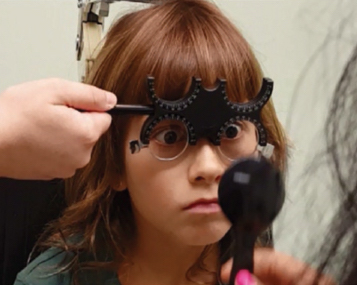 |
Young patients with strabismus may have decreased quality of life even after corrective surgery. Photo: Jasleen Jhajj, OD. |
Understanding how strabismus impacts a child’s quality of life, as well as their family’s, should be an important key to guide treatment. A recent study evaluated the functional vision and eye-related quality of life in children with strabismus and their parents using a recently developed and validated questionnaire called the Pediatric Eye Questionnaire (PedEyeQ). The answers revealed that strabismus has an important impact on affected children and their families. Scores were significantly lower in children with strabismus compared with healthy children. Interestingly, children with prior successful corrective strabismus surgery also had worse PedEyeQ scores.
The PedEyeQ was applied to non-operated children with strabismus (n=18), operated children with strabismus (n=24) and visually normal children (n=21). This instrument is composed of three components. The Child PedEyeQ component has two versions (for ages 5-11 or 12-17) and is completed by the children. The Proxy and Parent PedEyeQ components have three versions (ages 0-4, 5-11 or 12-17) and are answered by the parent or caregiver.
This study showed that strabismus has an important impact on affected children and their families. All PedEyeQ domain scores were significantly lower in children with strabismus compared with visually normal children, except the functional vision domain in the child version. Despite previous evidence of a positive effect of strabismus surgery, children with successful surgical outcomes had worse PedEyeQ scores in many domains compared with visually normal children.
In the child component, the frustration/worry domain score was significantly lower in kids with strabismus. In the proxy component, frustration/worry and eyecare domain scores were both significantly lower than functional vision, bothered by eyes/vision and social domain scores. In the parent component, worry about child’s eye condition domain score was significantly lower than all other parents’ scores, while the impact on parent and family domain score was significantly higher than all others.
The researchers said they believe that educational programs and psychosocial rehabilitation interventions that aim to improve the quality of life, participation in society and psychosocial functioning should be implemented in children with strabismus and their families.
“It is at least as important to address the functional and psychosocial effects of strabismus during childhood, while the social competencies and personality are developing,” they noted in their paper.
Silva N, Castro C, Caiado F, et al. Evaluation of functional vision and eye-related quality of life in children with strabismus. Clin Ophthlamol. 2022;16:803-13. |

